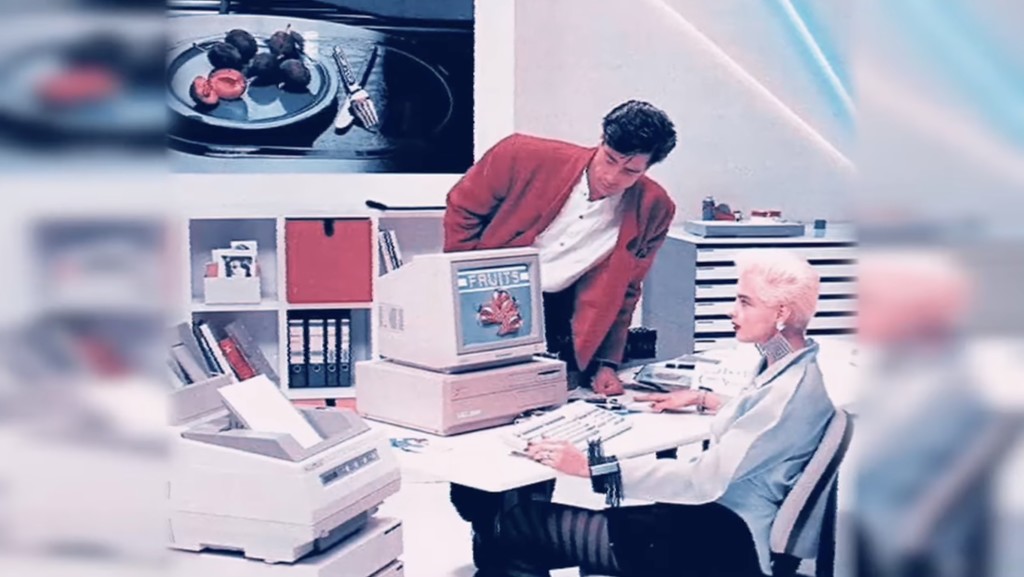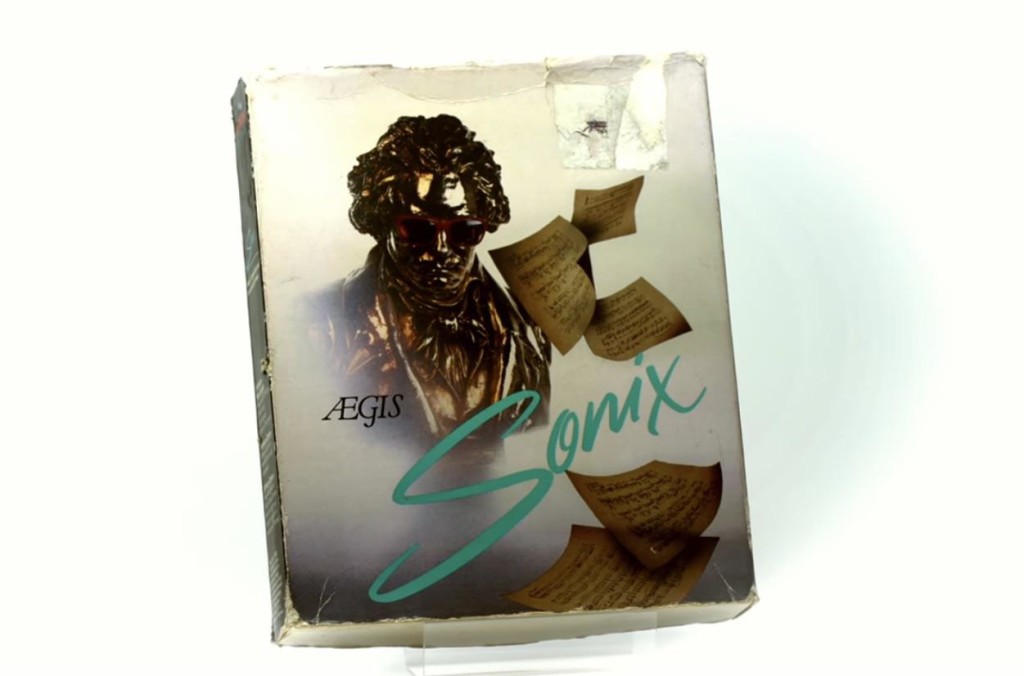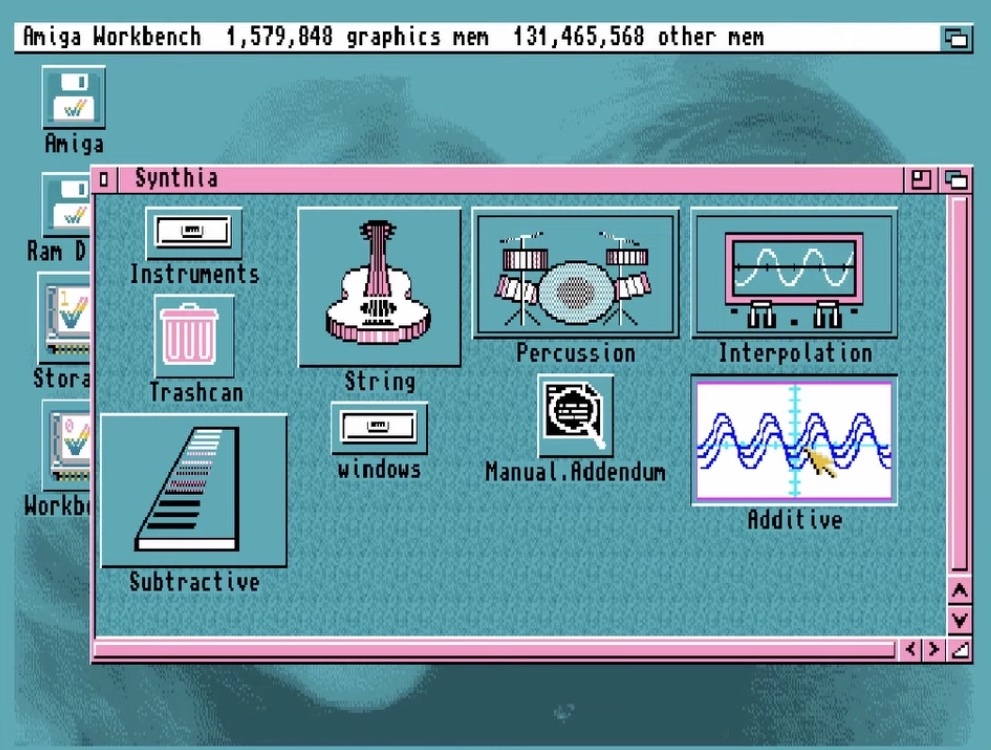The obscure software synth wonders of the Commodore Amiga hold up today as unique sound creation instruments. And as early as 1985 they offered real-time polyphonic synthesis, thanks to the onboard Paula chip. Paulee Bow shares their deep dive into a wide assortment of these in a new documentary – and makes the platform tantalizing enough that even generations born long after the Amiga may find themselves booting an emulator or hunting flea markets.
The beauty of this is, you really don’t need nostalgic glasses on to start to get sound design ideas. Paulee has four(!) Amigas in their rig, and notes that the I/O on the device even allows easy Eurorack emulation. But most of all, you’ll find sound ideas that are inspiring even today – with unique modulation, drawable waveshapes, crunchy wavetables, and of course wonderful timbral control and tracking ability. Listening to the example, I can’t help but notice that a lot of this sounds more creative and interesting than a lot of the AI-generated sound work you hear currently – and on a tiny sliver of the computational horsepower and power consumption.
I’d say this might inspire some developers out there, but of course it already has, from plug-in makers to the Polyend Tracker.
But Paulee’s documentary is just the sort of TV I love to watch. Dizzying, eye-popping retro graphics, neon colors, extended sonic explorations, and copious rabbit hole links to follow.
Links aren’t up yet, but here are a few for you now.

Amiga without the hardware
I imagine a zero-waste world where we repurpose all old machines and save them from landfills. But that’s not always practical – and if you want to emulate the Commodore Amiga platform, you now have more choices than ever.
This 2021 guide by MakeUseOf covers the basics.
FS-UAE is the “classic” choice and runs on everything – and is your best bet on Linux/BSD. But expect a slightly unfriendly UI.
WinUAE is the more native-feeling Windows alternative.
macOS – including ARM Macs – now has the option of the slicker, more modern vAmiga which has even spawned a couple of Web-based versions you can run on any OS.
Plus you can run on Raspberry Pi, meaning you could make a DIY self-contained Amiga device. See Amiberry or look to some nice pre-built options. And yeah, there’s the A500 mini hardware, which will run these tools.
Software highlights
Aegix Sonix was published in 1987; it’s early betas that date to 1984 or 1985, but that makes it one of the first publicly available soft synths. (I’d argue it makes a little more sense than crediting Laurie Spiegel’s Magic Mouse as the first, but then Magic Mouse is historic in some other ways as a generative tool.) It was a synth. It was a notation tool. And like a lot of Amiga, it was vaporwave before vaporwave:

There’s OctaMED Soundstudio, reviewed in 1997 in SOS.
Activision (yes, the Activision) published The Music Studio on Amiga as well as C64/128 and Atari platforms.
Braintrace Design’s Sonic Arranger gets a nod, with this killer 1992 tune:
Other tools featured (add links if you’ve got them in comments):
- Jamcracker Pro
- Art of Noise by Bastian Spiegel
- E-2 FM synth
- Synthia
- Electronic Arts (yeah, the EA) dabbled in music, too, with the ground-breaking Music Construction Kit for 8-bit Atari, C64, Atari ST, Apple IIGS, and eventually Amiga and Mac as Deluxe Music Construction Kit

Betrayal! (On Jamcracker Pro)
More resources
Here’s an interview by The Guru Meditation with Glenn Keller, who designed the Paula chip that gave the Amiga its unique sound:
Making music with Amigas as low-budget samplers:
This live stream covers a lot of the live performance stuff including modular, if you skip around!
Plus, there are artists like Samia Halaby, who taught herself “kinetic” digital painting at age 50 – in 1985 – and continues today.
And there was that time Andy Warhol got onboard for the launch and painted Debbie Harry:
And here, have some more tunes. When we get fed up with AI we can all unplug and go back to chip music, basically. I’ll send the party invite via fax machine.